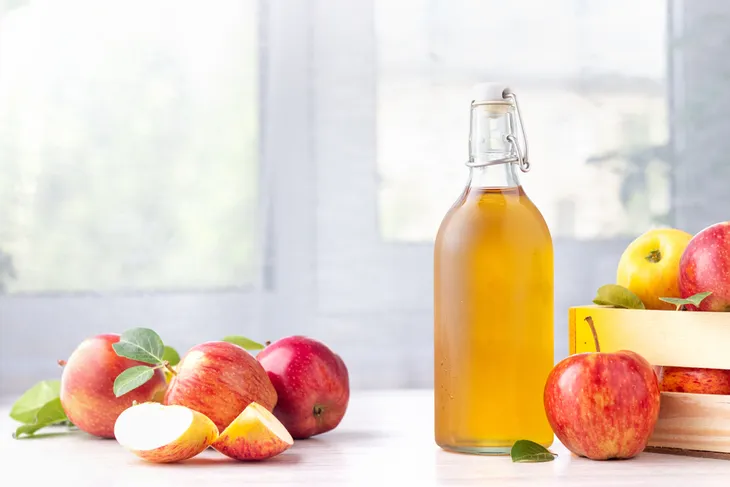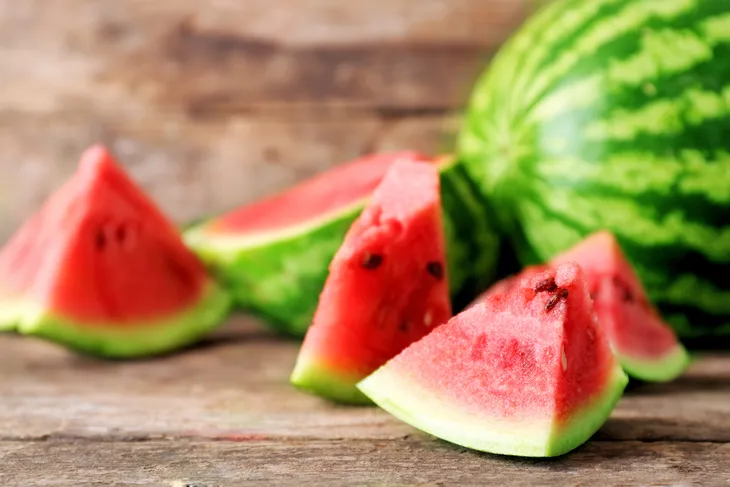During the long months of winter, when the days are short and the nights are long, most of us pine for sunlight, which seems to be very hard to find in the months following Thanksgiving and before Easter. But as they say, there is such thing as ‘too much of a good thing,’ and longer exposure to sunlight during the summer months poses a huge health challenge for people the world over.
To help with this, we’re told to lather on the sunscreen before heading out — even if it’s just to run to the supermarket. For those days on the beach, there’s a need to apply and consistently re-apply sunscreen, particularly after going for a dip in the water. But even the most thoughtful or paranoid sunbather can forget to apply sunscreen every hour or so, and the results can be pretty disastrous: a painful, stinging sunburn that can last for days and make sleeping or even wearing clothes incredibly uncomfortable. So, if this happens to you or someone in your family, what home remedies are available to help overcome this pain and discomfort? Let’s take a look at some popular options.
1. Take a Bath
One of the simplest and easiest ways to help alleviate the pain and discomfort associated with a blistering sunburn: go for a bath. Even just soaking the skin in some cool or lukewarm water can help restore some of its elasticity and moisture, providing relief for as long as you’re in the bath and a little while afterwards.
Just be careful about what you put in that bath with you. While it’s always tempting to use this opportunity to apply all kinds of fancy, scented soaps, shampoos, and conditioners, some of these substances can lead to the skin becoming dry, a particularly upsetting result for anyone recovering from a stinging sunburn. Instead, try dissolving some epsom salts in the water; this can help cool and soothe the skin without drying it out.
2. Baking Soda
Baking soda can do a fine job of soaking up all the stinky smells of the average refrigerator, but did you know it could also help you find relief from a painful sunburn?
To make this work for you, mix the baking soda with some water and apply gently to the burned skin. You can dab it gently using a soft towel or simply add the baking soda to a bath instead of epsom salts or soap. For best results, let the baking soda dry on the skin, so if you use this in the bath, plan to let yourself air dry rather than using a towel.
3. Apple Cider Vinegar
Apple cider vinegar has its uses in the world of cuisine, particularly as a key ingredient in salad dressings and marinades. Additionally, it’s become a popular health food option, with some nutrition experts claiming it can help prevent everything from cancer to diabetes and obesity.
But did you know it has topical benefits too, particularly when applied to painful and irritated skin that’s been exposed to the sun for too long? Mix about one cup of the apple cider vingear with some cold water and gently dab on the skin using a face cloth. Like aloe, it will help soothe the skin.
4. White Vinegar
White vinegar is, all things considered, a fairly popular condiment. It’s often used in salad dressings and marinades, and is a popular way to, along with coarse salt, add unique flavour to a plate of fish and chips.
But, like apple cider vinegar, it also has benefits when applied to a painful sunburn. You can dab a small cloth in vinegar and cold water before gently touching the skin, or you can add the vinegar and some water to a spray bottle and spritz the problem areas on your body. Just be sure to avoid getting the white vinegar in your eyes, as that can produce a painful sting.
Apple cider and white vinegar are other soothers you probably already have handy. Dermatologist Carl Korn, MD, suggests mixing cool bath water with 1 cup of vinegar. “It’s a great astringent; it soothes sunburn pain,” he says.
5. Frozen Veggies
A sunburn is actually the body’s way of working to repair the layers of skin damaged by the sun’s ultraviolet rays. That reaction involves inflammation and swelling, which can produce a hot feeling. In fact, you’ll often feel heat when touching a sunburn, and that’s not because the body has trapped the sun’s warmth — it’s just the body working hard to restore the skin to its natural moisture and elasticity.
In any case, you can help soothe this hot, stinging feeling by applying something very cold, like a pack of frozen vegetables. For best results, try frozen veggies that are easily and evenly broken apart, like frozen peas. A chunkier vegetable, such as broccoli or cauliflower, may not apply evenly to the skin, producing uneven and less satisfying results.
6. Ice Chips
A stinging sunburn produces a flaming hot sensation to the skin, which is why it makes sense to apply something particularly cold in order to alleviate the pain and discomfort. For this, many people will reach for a bag of frozen veggies, like frozen peas, but what if you don’t have that in your freezer?
An alternative that most people have at home: ice chips. They’re similar in texture to frozen peas, but generally easier to acquire, since many of today’s refrigerators produce both ice cubes and ice chips. The latter is better because unlike cubes, they form to the shape they’re applied to, meaning they’re less likely to add to the discomfort you’re already experiencing due to the sunburn. Just toss those ice chips in a ziploc bag and you’re good to go.
7. Drink More Water
We’re often told that we should be drinking more and more water, for a variety of reasons. For one, a more hydrated person is less likely to get the symptoms of dehydration, from feeling fatigued to experiencing a painful headache or migraine. Also, being fully hydrated helps keep our muscles working the best they can, improves our digestion, and can help boost our metabolism.
But drinking lots of water can also help you recover from a painful, irritating sunburn. Hydrating can help bring moisture back to the skin, helping it recuperate from the dehydrating effects of damage inflicted by over-exposure to ultraviolet rays emitted by the sun.
8. Eat More Fruit
As mentioned elsewhere on this list, a key part of recovering from a painful sunburn is restoring moisture to the affected area through hydration. That means drinking more water, but you can also help by consuming foods that contain lots of water, and that means eating fruit.
Not convinced? Consider that a typical slice of watermelon contains more than a cup of water, while other types of melon — including honeydew and cantaloupe — provide roughly the equivalent of a cup of water. Many other types of fruit, from apples and oranges to pears and pineapple, contain similar amounts of water. Of course, fruit can also help with many other health matters, like digestion, because it contains vitamins, minerals, and lots of fiber.
9. Get Milk
You can do a whole lot more with milk than just using it for your morning coffee and cereal. Because milk contains a unique combination of fat and protein, it can actually help reduce inflammation when gingerly applied to the skin.
The process for doing this is pretty simple: take a clean face cloth and soak it in a bowl of cold milk. Then, place it on the burnt area of the skin with some pressure for about 20 minutes. Repeat this process every few hours over the course of a day.
10. Aloe Vera (Plant)
The classic treatment for a painful scrape also works on red, inflamed and sun-scorched skin: aloe vera. Known as the “burn plant,” aloe vera has been shown by some studies to help in the healing process when its inner, sticky and soft flesh is placed gently upon the skin. That said, some medical experts remain skeptical about its effectiveness in helping one recover from a painful sunburn.
If you’re a believer, it doesn’t hurt to give aloe vera a try. For best results, grow your own aloe vera plant in your home so that it’s available, for free, whenever you or someone in your family gets just a bit too much sun.
11. Yogurt
Yogurt has been around for a long, long time and has been used the world over as a meal on its own or as a vital ingredient in more complex dishes. These days, it’s remarkable popular, largely because of more recent findings about its probiotic qualities, or “good” bacteria, which some studies suggest can help with digestion and avoiding irritating health issues like constipation.
But yogurt, which like milk contains a unique mixture of fat and protein, can also be helpful in treating painful sunburns. When applied directly to the skin, it can help reduce inflammation, in addition to simply providing a cool, calming sensation. For best results, use plain yogurt, which doesn’t contain all the sugar found in many types of yogurt meant to be eaten.
12. Lettuce
There are actually two ways to use lettuce, which is full of water, to help find some relief from a painful sunburn. For one, eat more lettuce: because it contains so much water, it can help your body regain moisture lost as a result of the burn and begin returning elasticity to the affected area. Of course, lettuce contains no calories, even though it offers fiber, so it’s an excellent choice for anyone trying to manage their weight better.
Second, lettuce can actually be applied directly to the sun-burnt area of the body, in a way similar to how aloe vera is used. Experts recommend boiling the lettuce leaves, then straining them, then letting them cool in the refrigerator for a few hours. This will cause the lettuce to emit a liquid that can be dabbed and applied to the skin with a cloth or cotton balls, or even simply laid on the skin directly.















